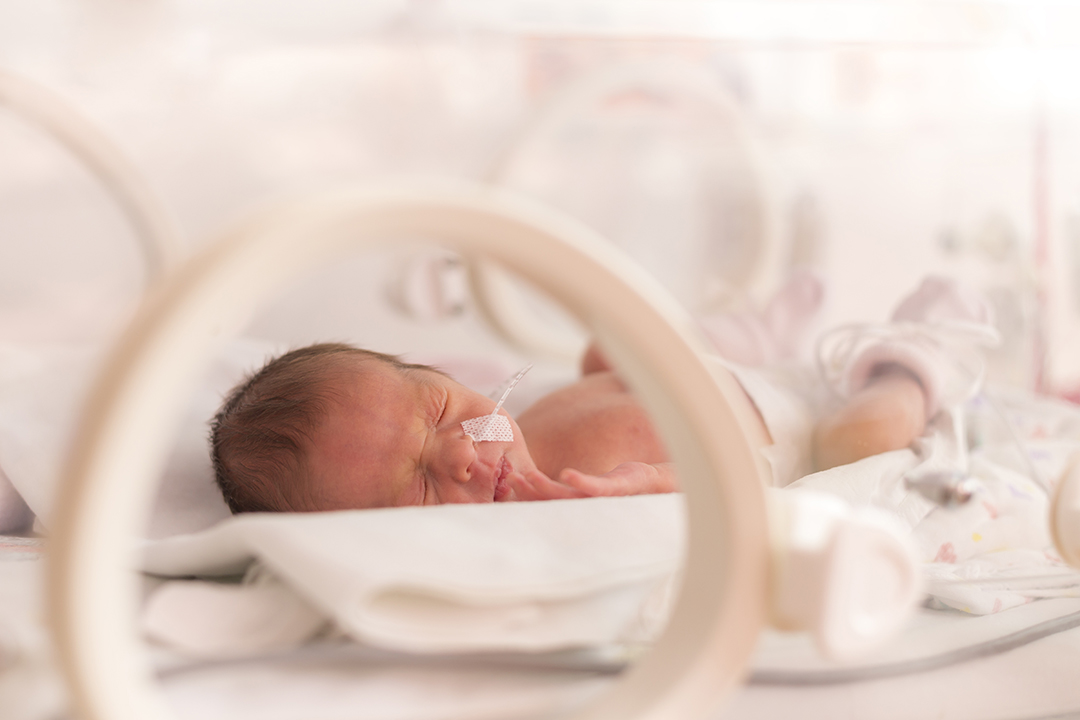
A growing fetus may lead to preterm labour
The statistics reflect a stark reality: about 15 million babies are born prematurely each year, with preterm birth accounting for 70 per cent of newborn deaths worldwide.
By Shayla JesseAs many as two out of every 10 mothers worldwide still experience preterm birth with their pregnancy, and if their babies survive, they often live with one or more disabilities — everything from hearing loss and blindness to chronic lung disease and cerebral palsy.
Despite decades of research, scientists haven’t been successful in reducing the global incidence of preterm births among mothers. There’s an urgent need for more research to address this critical issue that costs the health care system millions of dollars as well as great emotional stress for families.
As part of my graduate program at the University of Saskatchewan (USask), I’m working on a research project alongside my graduate supervisor, Dr. Daniel MacPhee (PhD), a professor of reproductive science at the Western College of Veterinary Medicine (WCVM). Our research team’s study focuses on the myometrium — an important aspect of pregnancy and labour.
The myometrium is the smooth muscular layer of the uterus, and during pregnancy, it transitions from a static organ for fetal development into an organ that can produce strong contractions for child delivery. During this time, the myometrium undergoes a lot of cellular changes — along with a lot of stress — due to the developing fetus.
For my research, I’m modelling the growth of a developing fetus by using a computerized vacuum device to stretch human myometrial cells. Due to the stress in these cells, we’re interested in a specific family of proteins when looking at the progression of pregnancy and labour.
Of the many proteins involved in pregnancy and labour, the small heat shock protein family (sHSPs) is of great importance. These proteins may be used as a diagnostic tool and a way to prevent preterm labour.
When very powerful labour contractions begin, the mother’s body requires an activation signal of the myometrium. Various signals, one of which is stress experienced from the growing fetus, begins the phosphorylation of sHSPs. Phosphorylation is the process during which phosphate molecules (an essential electrolyte in the body) are transferred to proteins. Once this activation occurs, the sHSPs trigger a signalling pathway plus they play vital functional roles associated with pregnancy and labour.
Two proteins of interest are heat shock protein beta 1 and heat shock protein beta 5 (HSPB1 and HSPB5). Both proteins are highly expressed in myometrial cells toward the end of pregnancy and at labour. This finding indicates that these proteins might be involved in activating the myometrium as well as labour contractions.
I’m working toward determining the role of HSPB1 and HSPB5 throughout pregnancy and labour — an important part of the puzzle. Since the exact role of uterine stretch on HSPB1 and HSPB5 in the myometrium during pregnancy is unclear, I’m working to investigate if inducing stress through stretching of myometrial cells affects the levels of HSPB1 and HSPB5 and their location within uterine myometrial cells. Previous research has found that phosphorylation of these proteins causes them to change shape, and as a result, change function.
Researchers are very interested in determining if the stress experienced by the myometrial cell layer of the uterus is due to the growing fetus. As well, we want to determine what functions each of these sHSPs play in the process of pregnancy and labour.
Answering these important questions may allow researchers to better understand the signalling pathway involved in pregnancy and labour. These findings may lead to potential treatment or even a preventive intervention that physicians can use to decrease the likelihood of preterm labour among their patients.
The Natural Science and Engineering Research Council of Canada (NSERC) is providing financial support for this research project.
Shayla Jesse of Maidstone, Sask., is a Master of Science student studying reproductive sciences in the WCVM’s Department of Veterinary Biomedical Sciences.
